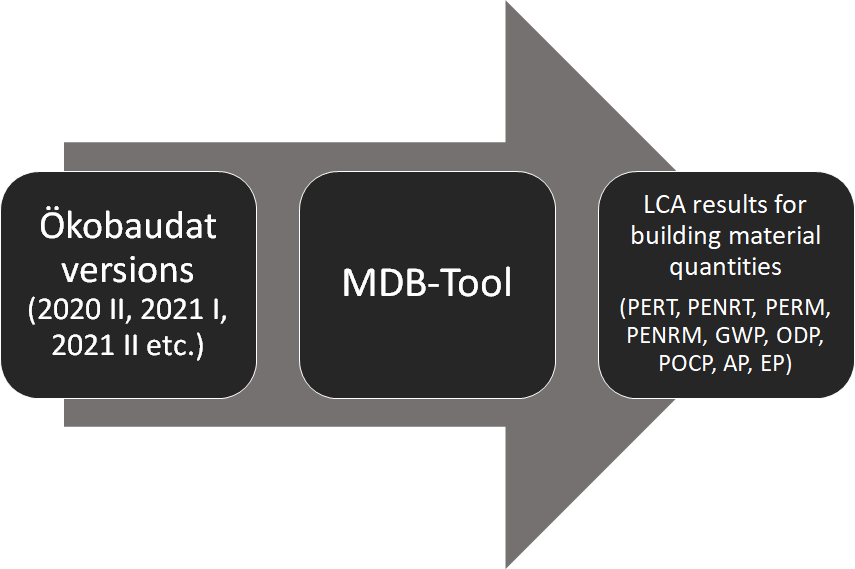
Unique Selling Point
The user-friendly tool, which is accessible here free of charge, is based on the comparison of several extensive databases, which include aim at presenting lifecycle emissions, including GEMIS, Ecoinvent, PROBAS, BAUBOOK and Ökobaudat.
Ultimately, preference was given to Ökobaudat (OBD), since the database is already specialized in the life cycle assessment (LCA) or life cycle considerations in the construction industry and is available from the highest official body, the Federal Ministry for Housing, Urban Development and Building (BMWSB). is provided. Here, selected material data records from different versions of the OBD were filtered according to the highest possible data availability or completeness of the LCA and essentially checked for plausibility of the relevant environmental indicators presented quantitatively. In addition, the material data records were reassigned to a concise, three-level material selection structure.
The tool does not require any information about locations and the type of construction work. A building assignment or information on the work phases of the individual sections of the planning of a building are not necessary. Information on areas (GFA, NFA, FS etc.) or cubature or volume (GV) does not have to be given either. Likewise, it is not necessary to state the exact design or the structure of components, components or component layers.
Only the built-in materials for which results are to be generated must be known in type and quantity.
An extensive search for materials in a selection of a number of categories and subcategories with path lengths of different lengths is also no longer necessary. Instead, each material can be called up by entering a category and only one further subcategory.
Immediately after the material has been selected and added, specifying the type and quantity, the results of the environmental impact are already calculated and shown.
